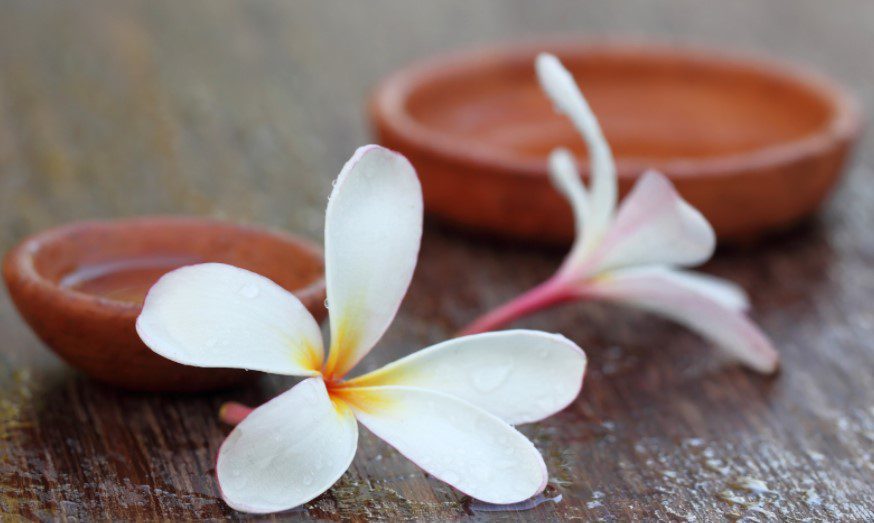Plumerias are admired for their stunning, fragrant flowers and are often associated with tropical landscapes. Also known as frangipani, these plants offer vibrant blooms in various colors, making them a favorite for gardens worldwide. Whether you live in a warm climate or a cooler region, you can enjoy growing plumerias with the right know-how.
Why Plumerias Are So Popular
Plumerias are not just visually striking; their sweet, alluring fragrance adds to their appeal. They are commonly grown in tropical and subtropical regions due to their warmth-loving nature. In places like Hawaii, plumeria flowers are used to make leis, symbolizing friendship and hospitality. However, with the right care, you can grow plumerias even in regions with cooler climates.
Growing Conditions for Plumerias
Ideal Climate (USDA Zones 10-11)
Plumerias thrive in USDA Hardiness Zones 10 to 11, where temperatures remain warm throughout the year. These tropical plants cannot tolerate freezing temperatures, so if you live in a colder region, growing them in containers is your best option. They flourish in areas that experience long summers with plenty of warmth and sunshine.
Sunlight Requirements
Plumerias love the sun! They need at least six hours of full sun daily to produce their best flowers. If you’re growing them indoors or in a cooler region, ensure they get plenty of direct sunlight by placing them near a sunny window or outside during the warmer months.
Soil Preferences
Plumerias prefer well-draining soil. A sandy or loamy mix is ideal, allowing excess water to drain away easily, which helps prevent root rot. Aim for a slightly acidic to neutral pH (around 6.0 to 7.5). Testing kits are available at garden centers if you’re unsure about your soil’s pH.
Planting Plumerias
Outdoor Planting in Warm Climates
If you live in a region where the temperature rarely dips below 50°F, you can plant your plumeria directly in the ground. Choose a sunny spot in your garden with well-draining soil. Dig a hole twice as wide and deep as the root ball, place the plant, and fill the hole with a mix of soil and compost. Water thoroughly after planting.
Container Planting in Colder Regions
Planting plumerias in containers allows for greater flexibility for gardeners in colder areas. Use a large pot with drainage holes to avoid waterlogging. A well-draining potting mix is essential—consider adding perlite or sand to standard potting soil. During the summer, place the container outdoors in full sun, and when temperatures drop, bring it indoors to protect the plant from cold damage.
Best Time to Plant Plumerias
The best time to plant plumerias is in the spring or early summer, once the danger of frost has passed. This gives the plant plenty of time to establish itself before the cooler months arrive.
Caring for Your Plumeria
Watering Guidelines
Plumerias prefer a good soak but need time to dry out between watering sessions. During the active growing season (spring and summer), water thoroughly when the top inch of soil feels dry. In the winter, reduce watering to once a month, as the plant will be dormant and won’t need as much moisture.
Fertilizing Plumerias
Fertilizing your plumeria will encourage healthy growth and more vibrant blooms. Use a high-phosphorus fertilizer every 2 to 4 weeks during the growing season. If you’re growing in containers, be mindful not to over-fertilize, as container plants can quickly accumulate excess salts.
Pruning for Shape and Maintenance
Pruning helps keep your plumeria in shape and encourages more flower production. In late winter or early spring, prune back any leggy or damaged branches. Always use clean, sharp tools to avoid spreading diseases. Don’t worry about being too aggressive—plumerias respond well to pruning and will bounce back with new growth.
Common Problems with Plumerias
Dealing with Pests
Like many plants, plumerias can attract pests. The most common culprits include spider mites, aphids, and whiteflies. Regularly inspecting your plant and using insecticidal soap or neem oil can help keep these pests in check.
Preventing and Treating Diseases
Plumerias are prone to fungal infections, especially when exposed to too much moisture. A fungus causes leaf rust, manifesting as yellow-orange spots on the leaves. To prevent this, avoid overhead watering and ensure good airflow around the plant. Remove the affected leaves and treat the plant with a fungicide if you notice rust.
Propagating Plumerias from Stem Cuttings
One of the best ways to expand your plumeria collection is by taking stem cuttings. Here’s how to do it:
- Select a Healthy Branch: Choose a mature, healthy branch and cut a 12- to 18-inch section.
- Allow to Callous: Let the cutting dry out in a shaded area for a week or two to form a callous over the cut end.
- Plant the Cutting: After it has calloused, plant the cutting in well-draining soil. Water lightly until new growth appears.
- Be Patient: Roots can take a few weeks to a couple of months to develop.
Popular Plumeria Varieties
White Plumeria (Plumeria alba)

This variety features fragrant white flowers with a yellow center and is well-suited to warmer climates. It thrives in full sun and well-draining soil, making it a favorite for tropical gardens.
Singapore Plumeria (Plumeria obtusa)
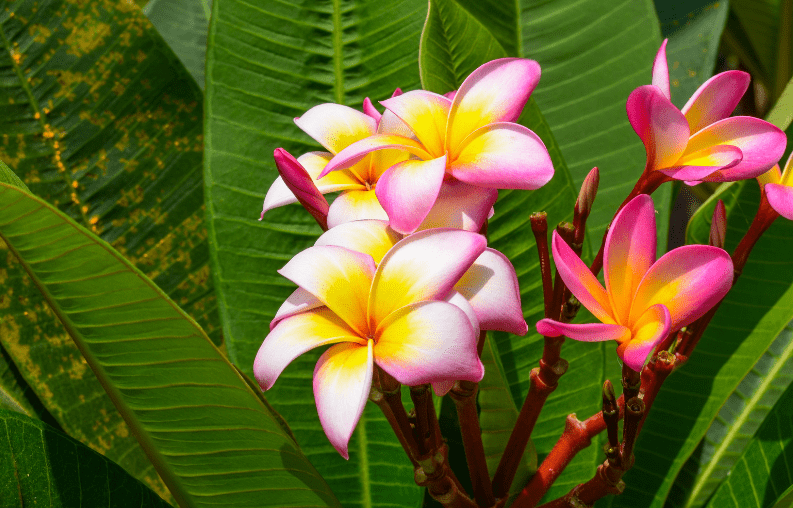
Known for its glossy green leaves and rounded white flowers, Singapore plumeria is a common sight in gardens and as a potted plant. It requires minimal maintenance and is quite resistant to pests and diseases.
Bridal Bouquet Plumeria
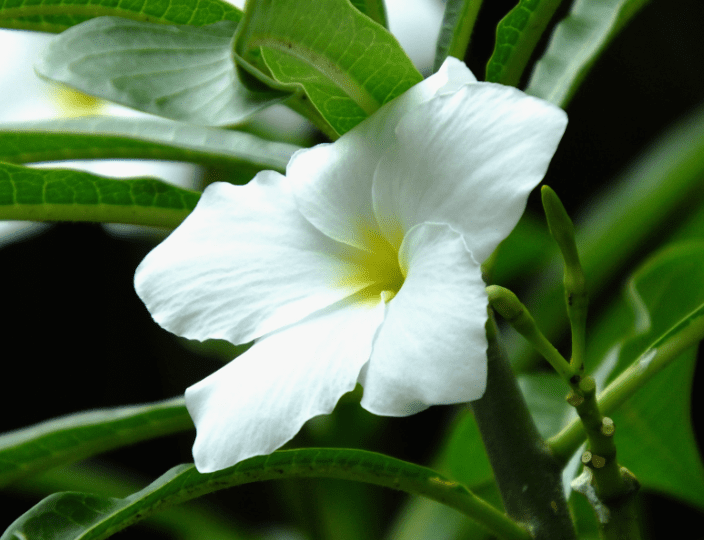
This variety produces a stunning array of white blooms that resemble a bridal bouquet. It’s a compact grower, making it perfect for container planting.
Pudica Plumeria
Companion Plants for Plumerias
Plumerias thrive in vibrant gardens, and pairing them with the right companion plants can enhance their beauty and overall health. Here’s more specific information on some excellent companion choices:
Purple Fountain Grass (Pennisetum setaceum ‘Rubrum’)
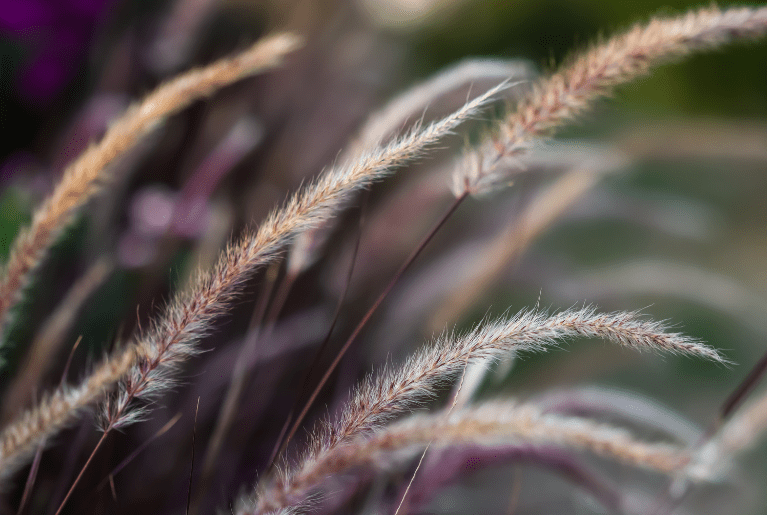
- Benefits: The contrasting purple foliage of this grass adds a dramatic touch to the garden, while its feathery plumes create a sense of movement. Purple fountain grass is drought-tolerant and requires minimal maintenance, making it an ideal companion for plumerias.
- Planting: Place purple fountain grass near plumerias in full sun to partial shade. It prefers well-draining soil and can be grown in containers or directly in the ground.
Firestick Plant (Euphorbia tirucalli)
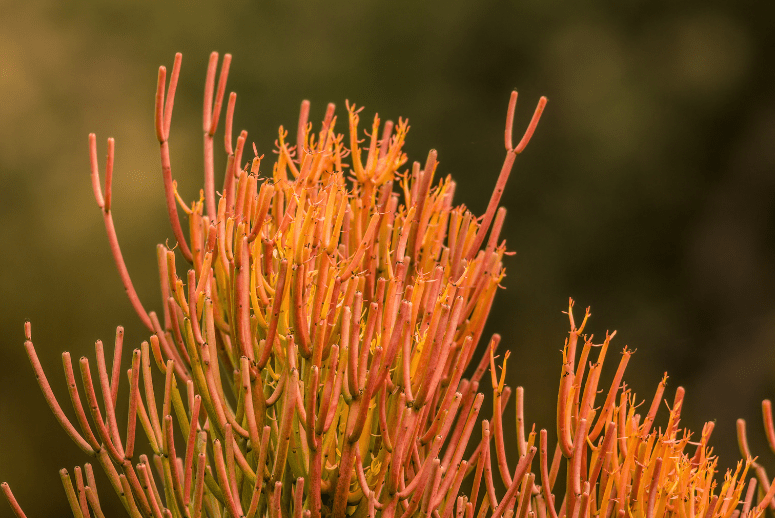
- Benefits: This succulent’s striking red-orange stems provide a bold contrast to the vibrant colors of plumerias. Firestick plants are drought-tolerant and low-maintenance, making them suitable for gardens and containers.
- Planting: Position firestick plants near plumerias in a sunny location. They prefer well-draining soil and can tolerate occasional neglect.
New Zealand Flax (Phormium tenax)
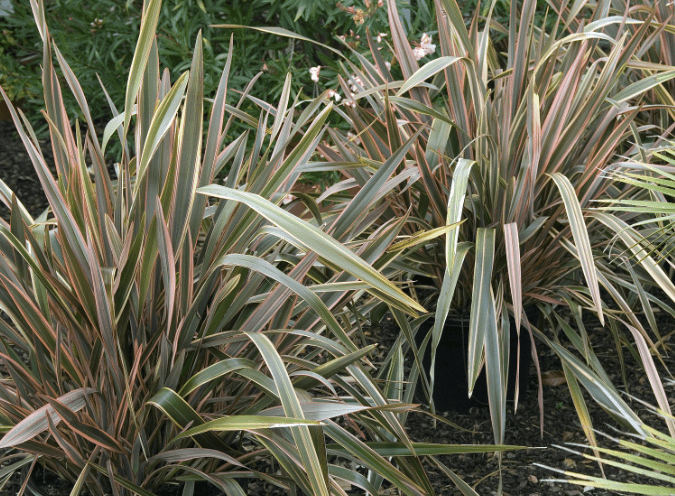
- Benefits: New Zealand flax’s tall, sword-like leaves create a vital vertical element in the garden, complementing the rounded shape of plumeria blooms. This hardy plant can thrive in various conditions, including full sun and partial shade.
- Planting: Place New Zealand flax near plumerias in a location with well-draining soil. It’s available in various cultivars with different leaf colors and sizes, allowing you to choose the perfect fit for your garden.
Lantana (Lantana camara)
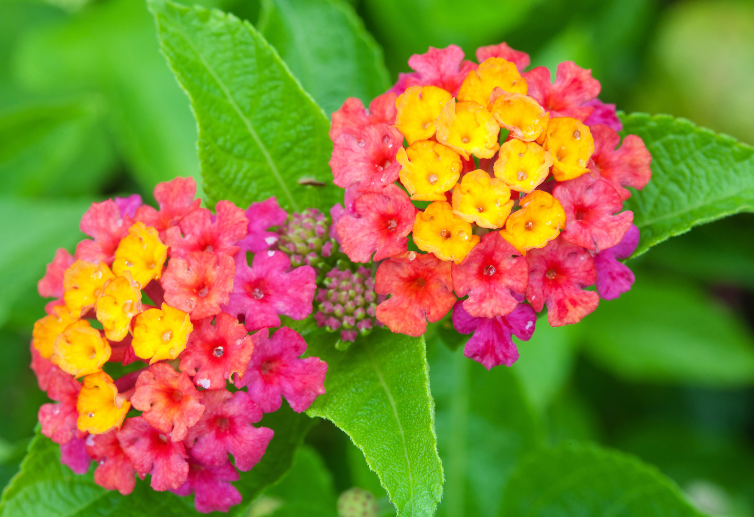
- Benefits: Lantana’s vibrant flowers attract pollinators, such as butterflies and hummingbirds, which can also benefit your plumerias. This plant is available in various colors and can be grown as a shrub or a groundcover.
- Planting: Position lantana near plumerias in a sunny location with well-draining soil. It’s a relatively low-maintenance plant that requires regular pruning to maintain its shape.
Jasmine (Jasminum officinale)
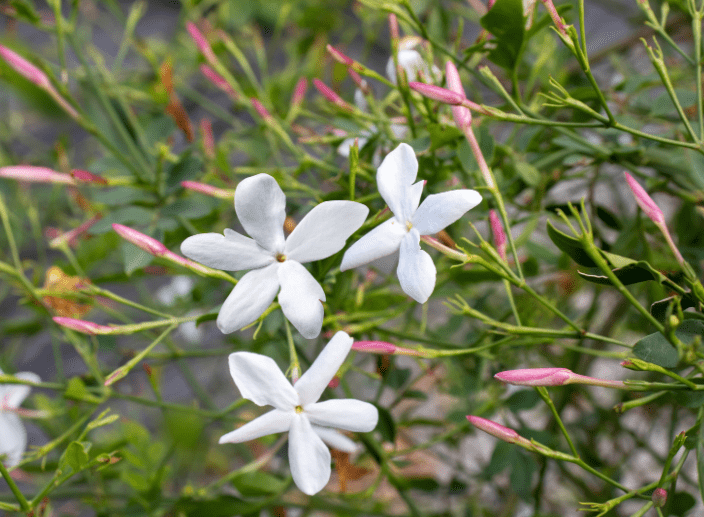
- Benefits: The fragrant blooms of jasmine complement the sweet scent of plumerias, creating a delightful fragrance in your garden. Jasmine can be trained as a vine or grown as a shrub, and it thrives in warm climates.
- Planting: Place jasmine near plumerias in a location with full sun to partial shade. It prefers well-draining soil and requires regular pruning to maintain its shape.
Regional Considerations for Growing Plumerias
While plumerias are native to tropical and subtropical regions, they can be successfully grown in colder climates with the right care and techniques. Here are some regional considerations to keep in mind:
Mediterranean Climate
- Varieties: Opt for varieties known for their hardiness, such as Plumeria obtusa (Singapore Plumeria) and Plumeria rubra (Red Plumeria). These varieties are more tolerant of cooler temperatures and can withstand occasional frost.
- Techniques: During the winter, protect your plumerias from frost by covering them with frost blankets or moving them indoors to a sheltered location. Provide ample sunlight during the growing season, and ensure proper drainage to prevent root rot.
Temperate Climate
- Container Gardening: Growing plumerias in containers allows you to move them indoors during the winter months to protect them from cold temperatures. Choose a well-draining potting mix and ensure the container has drainage holes.
- Indoor Care: During the winter, place your plumeria in a sunny location indoors and reduce watering. Increase watering as the days lengthen and temperatures rise.
Tropical and Subtropical Climates
- Direct Planting: In these regions, plumerias can be planted directly in the ground. Choose a sunny location with well-draining soil.
- Year-Round Growth: Plumerias will thrive in these climates, producing abundant blooms yearly. Provide regular watering, fertilization, and pruning to maintain their health.
Cold Climates
- Indoor Cultivation: Plumerias must be grown indoors year-round in regions with harsh winters. Provide ample sunlight, warm temperatures, and moderate humidity.
- Summer Outdoors: During summer, you can move your plumeria outdoors to a sheltered patio or balcony. Bring it indoors before the first frost.
Additional Tips:
- Protect from Frost: In mild climates, unexpected frosts can damage plumerias. Be prepared to cover your plants during cold snaps.
- Consider Dwarf Varieties: For smaller spaces, dwarf plumeria varieties offer a compact option.
- Experiment with Different Varieties: Not all plumeria varieties perform equally well in all climates. Experiment with different varieties to find the best fit for your region.
Wrapping It Up: Start Growing Plumerias Today!
Plumerias are not just a beautiful addition to any garden, but they are also easy to care for with the right conditions. Whether you’re planting them in the ground or a container, following this guide will help you enjoy their vibrant blooms and intoxicating fragrance for years to come. Ready to add some tropical charm to your garden? Give plumerias a try!






















